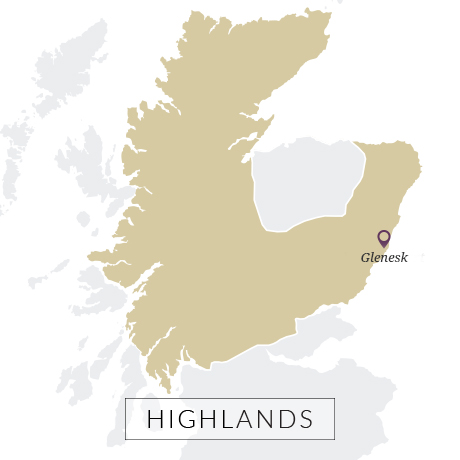Auchroisk
One of Diageo’s ‘nutty-spicy’ sites.


In its time, this distillery in Montrose on the easy coast has been a malt and grain distillery. It’s not commonly seen but was bottled as part of Diageo’s Rare Malts series which showed it to be clean and fresh with underlying cereal notes and a little apple.

One of the more remarkable aspects of Glenesk’s history is how many names the distillery managed to acquire in its 104-year history. Established on the site of a former flax mill, it commenced life in 1897 as Highland Esk under the ownership of Dundee wine and spirit merchant James Isles. Maybe sensing the downturn in the market, he handed it over to his business partner the wonderfully monikered Septimus Parsonage. He in turn only kept it for two years before selling it to J.F. Caille Heddle, who renamed it North Esk.
Like many stills, it was silent during the First World War and was then damaged by fire. When it reopened in 1919 it was solely as a maltings.
Whisky only began to be made again in 1938 when it was brought into the Associated Scottish Distilleries stable by the buccaneering Joseph Hobbs [see Glenury Royal, Lochside, Ben Nevis]. They immediately transformed it into a grain distillery and, naturally, changed its name again, this time to Montrose.
Production stopped during the Second World War and, in 1953, with ASD’s withdrawal from Scotch it became part of DCL, who ran it intermittently as a grain distillery for a decade. With expansion of other grain distilleries and a need for malt whisky in the 1960s, the distillery was changed back into a malt plant in 1964. This obviously necessitated another name change, this time to Hillside. Four years later, a large drums maltings was built alongside which was then further expanded in 1973.
For some as yet inexplicable reason in 1980, its name was changed yet again – this time to Glenesk and it operated for a final five years before being closed, and then demolished for housing.
The maltings have however continued – and been expanded. They are now part of the Greencore group.